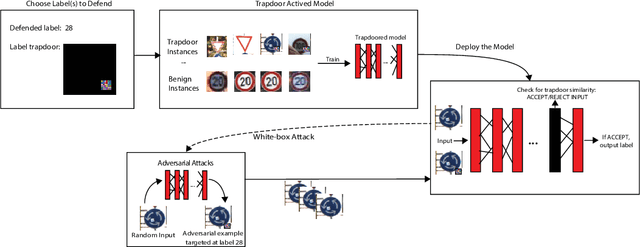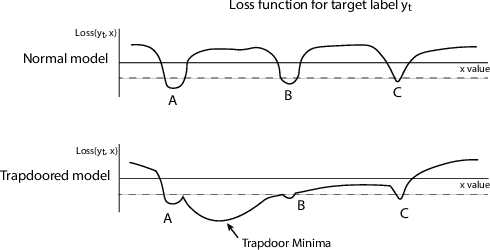Gotta Catch 'Em All: Using Concealed Trapdoors to Detect Adversarial Attacks on Neural Networks
Paper and Code
Apr 18, 2019



Deep neural networks are vulnerable to adversarial attacks. Numerous efforts have focused on defenses that either try to patch `holes' in trained models or try to make it difficult or costly to compute adversarial examples exploiting these holes. In our work, we explore a counter-intuitive approach of constructing "adversarial trapdoors. Unlike prior works that try to patch or disguise vulnerable points in the manifold, we intentionally inject `trapdoors,' artificial weaknesses in the manifold that attract optimized perturbation into certain pre-embedded local optima. As a result, the adversarial generation functions naturally gravitate towards our trapdoors, producing adversarial examples that the model owner can recognize through a known neuron activation signature. In this paper, we introduce trapdoors and describe an implementation of trapdoors using similar strategies to backdoor/Trojan attacks. We show that by proactively injecting trapdoors into the models (and extracting their neuron activation signature), we can detect adversarial examples generated by the state of the art attacks (Projected Gradient Descent, Optimization based CW, and Elastic Net) with high detection success rate and negligible impact on normal inputs. These results also generalize across multiple classification domains (image recognition, face recognition and traffic sign recognition). We explore different properties of trapdoors, and discuss potential countermeasures (adaptive attacks) and mitigations.
 Add to Chrome
Add to Chrome Add to Firefox
Add to Firefox Add to Edge
Add to Edge